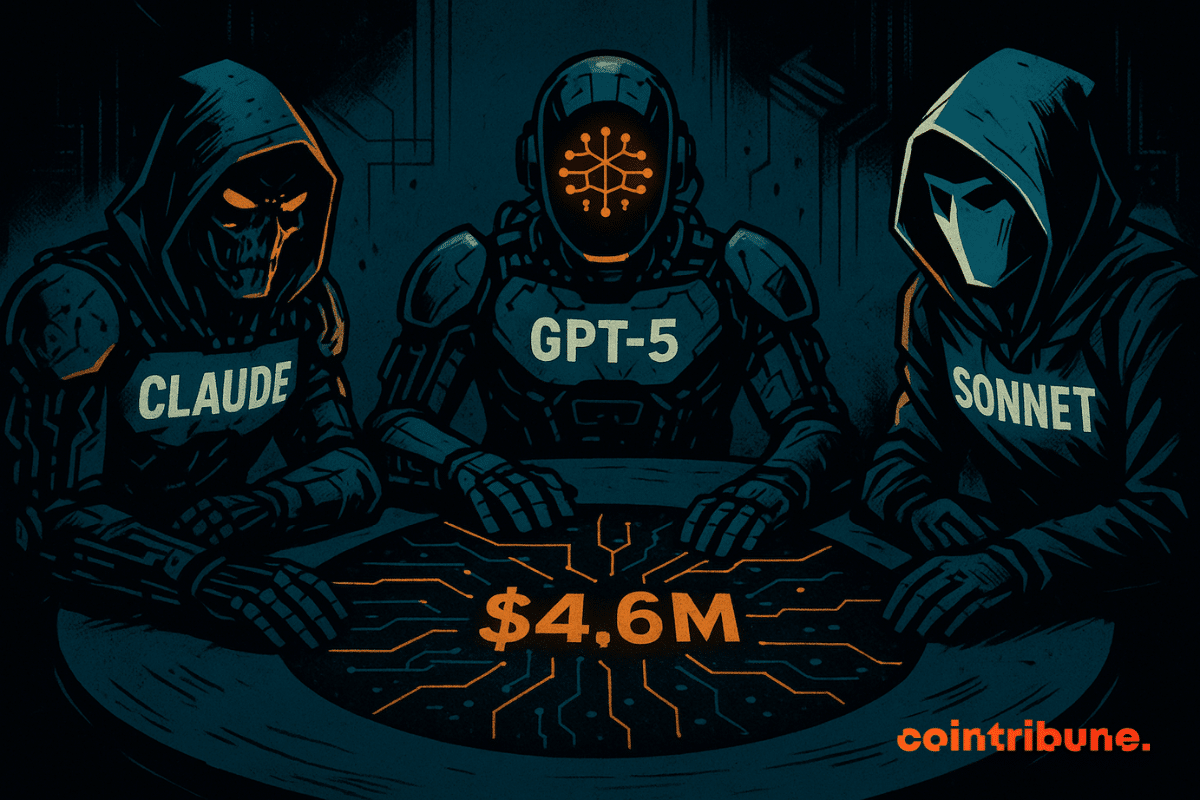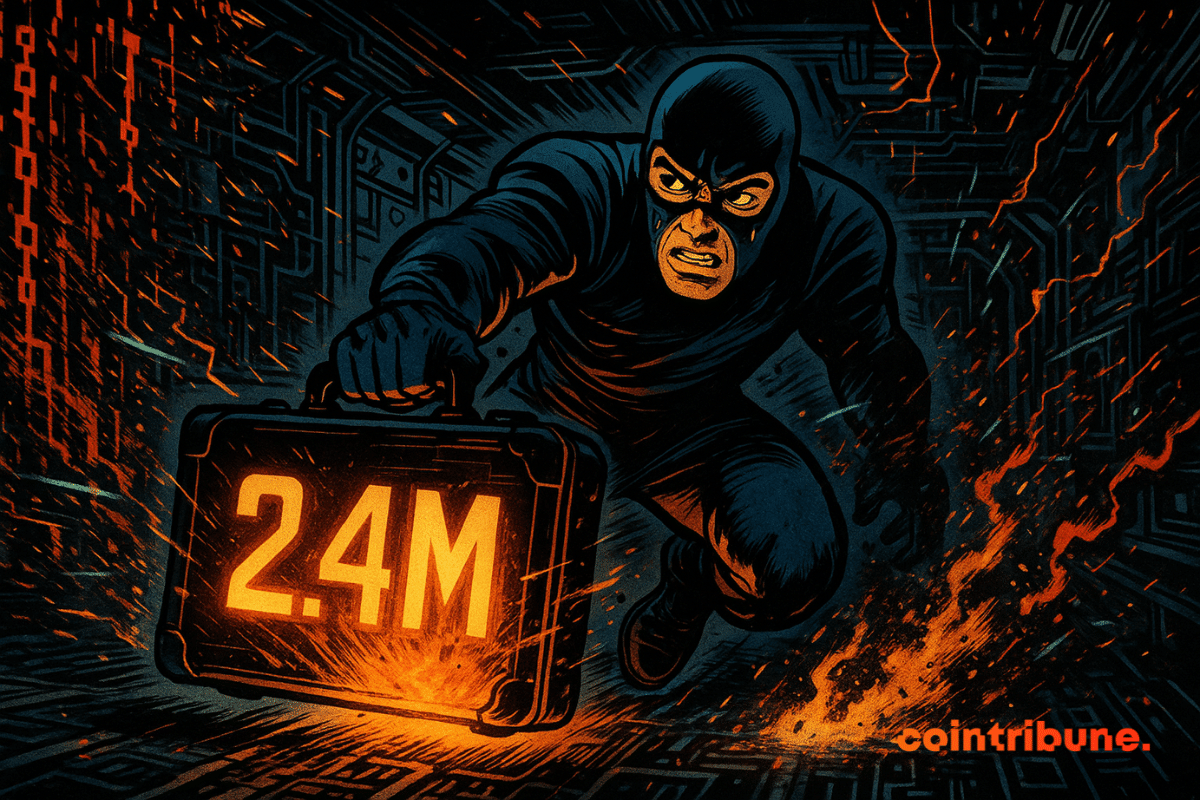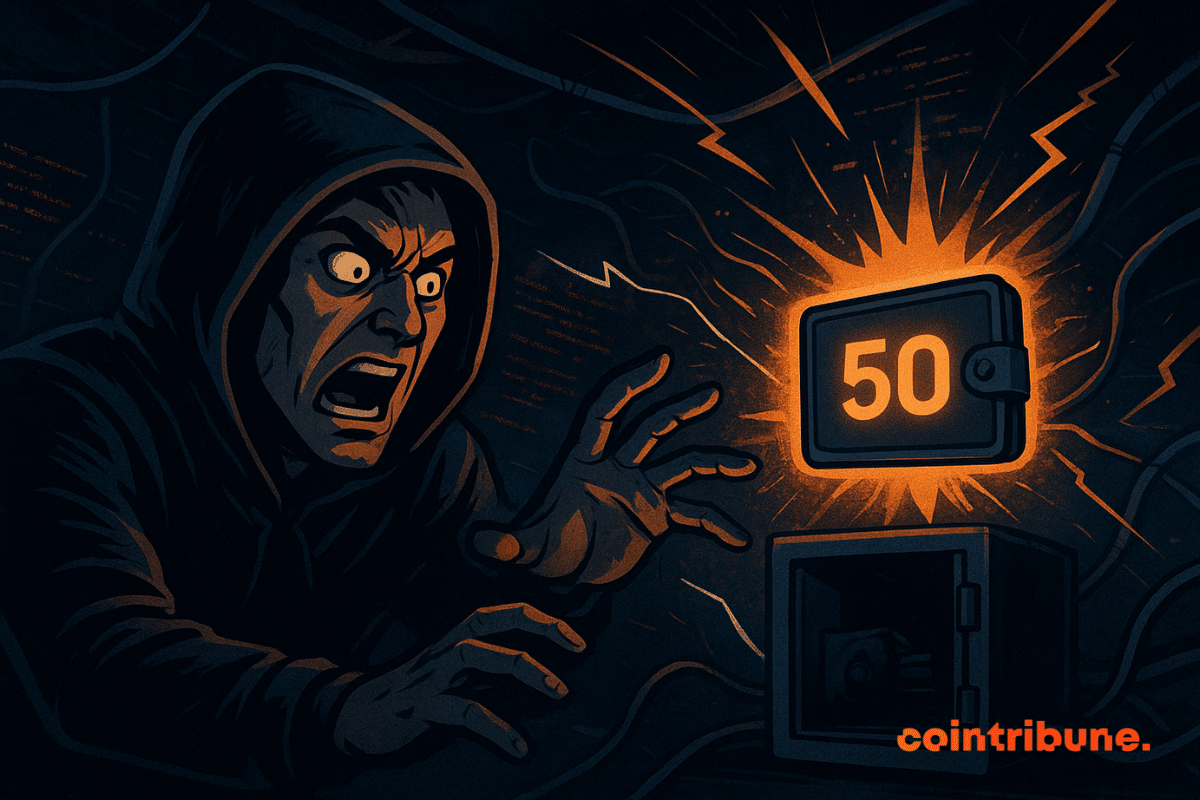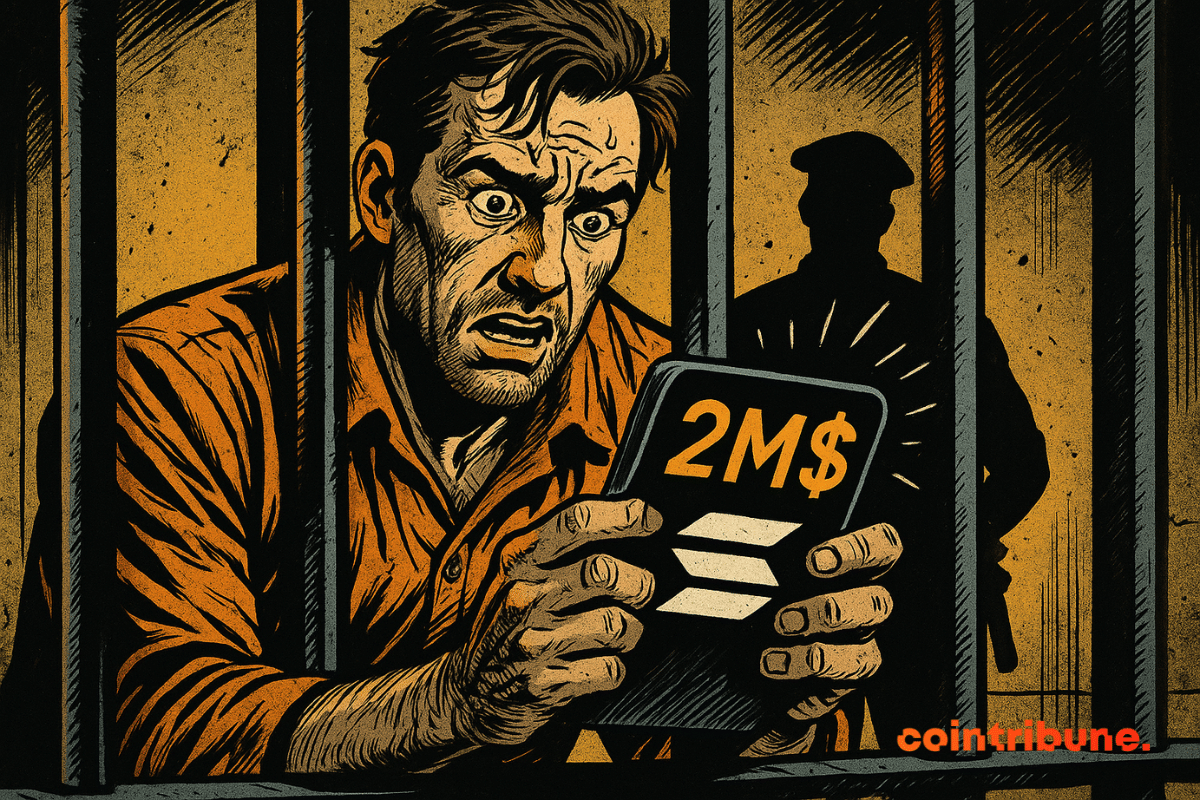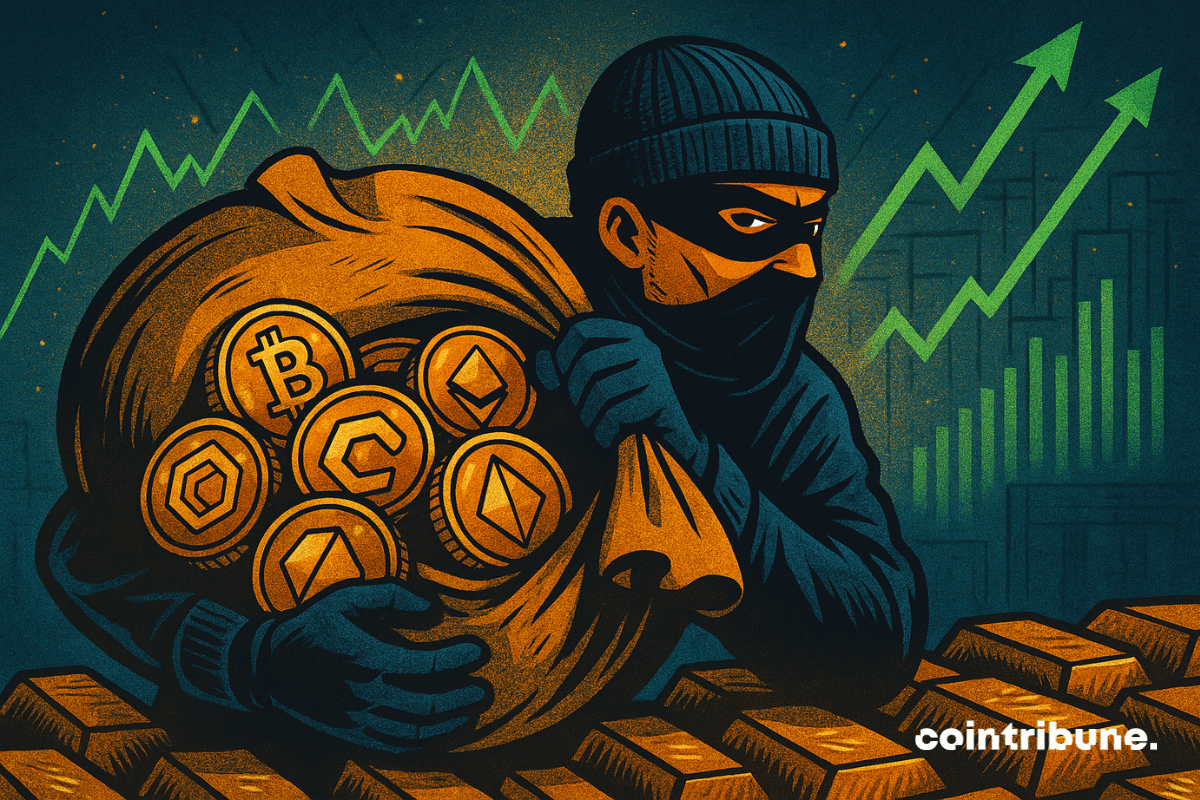Crypto 2025: invisible hackers, billions lost, a rogue state involved... What if your wallet was the next silent victim?
Hack
Solana has resisted one of the most intense DDoS attacks ever recorded on a public blockchain, peaking at 6 terabits per second. The network remained stable, with no interruptions or notable degradation. This inadvertent test, occurring amid recurring technical tensions in the ecosystem, marks a turning point. Long criticized for its instabilities, Solana today shows robustness that could change its position in the hierarchy of decentralized infrastructures.
At PEPE, memes were promised, not malware. The result? A hacked site, emptied wallets, and a resurrected hacking tool. Everything is swimming in crypto-cacophony!
A fake developer, real spies, and US tech trapped: arrested, Vong inadvertently revealed how Pyongyang hacks America without firing a single rocket.
Once reserved for human hackers, crypto scheming has found its master: AI, which digs the hole... directly into decentralized wallets, without asking for permission!
An arithmetic bug, billions of tokens, a hurried hacker… and Yearn retrieving $2.4M in commando mode. In the crypto jungle, treasure hunts are intensifying.
A hacker, a forgotten division, and nine million vanished... The arithmetic falters, the vaults empty, and Yearn's coders mourn their yETH. Crypto drama or bad comedy?
Crypto faced a tough November, losing $127M to hacks and attacks, with DeFi platforms hit hardest and $45M recovered.
As states tighten their control over cryptos, an old bitcoin theft resurfaces amid a geopolitical rivalry. LuBian, a Chinese mining pool, reportedly lost more than 127,000 BTC in 2020. Remaining discreet for years, the case suddenly resurfaces as Beijing now accuses the United States of having seized these funds, now valued at over 14 billion dollars, through an intelligence operation. The suspicion of a state confiscation reignites tensions between two superpowers.
Balancer has just published its preliminary report on the attack that shook the DeFi protocol on November 3. A technical flaw in the V2 pools allowed hackers to siphon 128 million dollars across seven different blockchains. But the real bill is much higher: the total value locked (TVL) collapsed by 58% in just two days. How could a protocol audited eleven times fall victim to such a debacle?
Eleven audits, a brilliant architecture, but 128 million gone... The crypto-miracle Balancer falls hard. Who said code was better than a good old banker?
Hackers disguised as pink rabbits siphon your cryptos through charming tweets. CZ, the former head of Binance, reveals the backstage of a great tense digital circus.
Lost private key, millions gone, disillusioned trader... While Hyperliquid shines, thieves never forget to act. Wild crypto seeks reckless for one-way operation.
Crypto hack losses fell sharply in the third quarter of 2025, signaling progress in curbing large-scale exploits. Still, September offered a stark reminder of ongoing risks, logging a record number of million-dollar hacks. While attackers stole less overall, their tactics continued to evolve, with wallets and centralized platforms increasingly targeted over smart contracts.
A paralyzed blockchain bridge, more than two million dollars gone, and a community awaiting explanations. Ten days after the Shibarium bridge hack, no trace of the stolen funds, and the system remains completely blocked. This operational silence keeps the Shiba Inu ecosystem in a worrying haze, where each day without an answer erodes trust a little more.
Malicious actors are at it again, this time targeting the account of a well-known software developer's node package manager (NPM). Investigations revealed that the hackers added malware to popular JavaScript libraries, primarily attacking crypto wallets. However, after launching what industry sleuths describe as the largest supply chain attack in crypto history, the hackers managed to steal only $50 worth of crypto assets.
SwissBorg has just suffered one of the most striking hacks of the year. In a few hours, 193,000 SOL, or 41 million dollars, were siphoned off via a flaw in the Kiln validator API, a provider responsible for staking on Solana. It was not SwissBorg's infrastructure that failed, but that of a third-party partner. The incident reignites the debate on the security of external integrations in a sector where the slightest failure can be enough to bring down the entire chain.
Embezzle 2 million, end up in prison, become a hero despite yourself... In crypto, even robbers become influencers. What if stealing was boosting business better than an airdrop?
The T3 Financial Crime Unit, a coalition between Tron, Tether, and TRM Labs, is expanding its reach by bringing Binance on board as its first T3+ partner, aiming to combat an increasingly fast-paced wave of crypto hacks. Since launching in September 2024, the unit has frozen more than $250 million in illicit crypto assets, more than double the $100 million reported in its first six months. The group works alongside law enforcement agencies worldwide to disrupt money laundering, investment fraud, blackmail, terrorism financing, and other blockchain-based crimes.
DeFi platform CrediX Finance has disappeared from the web following a $4.5 million exploit that drained its liquidity pools, prompting suspicions of a coordinated exit scam. The incident was first flagged on Monday by blockchain security firms, who found that the attackers gained control of the protocol’s multisig admin and bridge wallets six days prior. Using this access, they minted new tokens, posted them as collateral, and then siphoned liquidity from CrediX’s pools.
The hacker behind the $40 million GMX exploit has begun returning the stolen crypto after accepting a $5 million white hat bounty offered by the GMX team.
Crypto is stolen in 2025: from private keys to state-sponsored attacks. Bybit, a monumental hack. When governments take an interest in crypto-thefts, the game changes completely. Explanations below.
As they clash with missile strikes, Israel and Iran are launching attacks... on the blockchain. Nobitex has suffered from it, cryptocurrency hacked, propaganda unleashed.
The Sui foundation expresses its support for the Cetus proposal to recover the funds stolen during the hack.
More than 69,000 Coinbase customers victims of an internal crypto attack. We provide you with all the details in this article!
Cybersecurity is no longer an abstract issue for players in the crypto space. At Coinbase, a recent leak of personal data has triggered a tangible risk: the risk of physical attacks. Michael Arrington, founder of TechCrunch, states that this breach "will lead to deaths." In an ecosystem where anonymity is often a guarantee of security, this incident raises a latent concern: that digital vulnerabilities may spill over into the real world.
Bribed agents, massive data leaks, exposed clients… The crypto exchange Coinbase in the middle of judicial turmoil. Details here!
Coinbase, the largest American crypto exchange platform, has just suffered a large-scale cyberattack involving the leak of sensitive data from about 1% of its users. This security breach comes at a particularly delicate time for the company, just days before its entry into the prestigious S&P 500 index. What will be the consequences for this giant that claims over 105 million users?
"A fake message posted on Discord has trapped Ledger users into revealing their recovery phrase. Behind this major attack lies a human flaw and a formidable manipulation. Changpeng Zhao sounds the alarm... Are we really prepared for these new forms of hacking?"
The digital war knows no borders. Just weeks before the G7 summit, cyberattacks orchestrated by North Korea through crypto platforms are becoming a global security priority. A coordinated response is taking shape, in the face of a threat that combines technology, finance, and political strategy.




